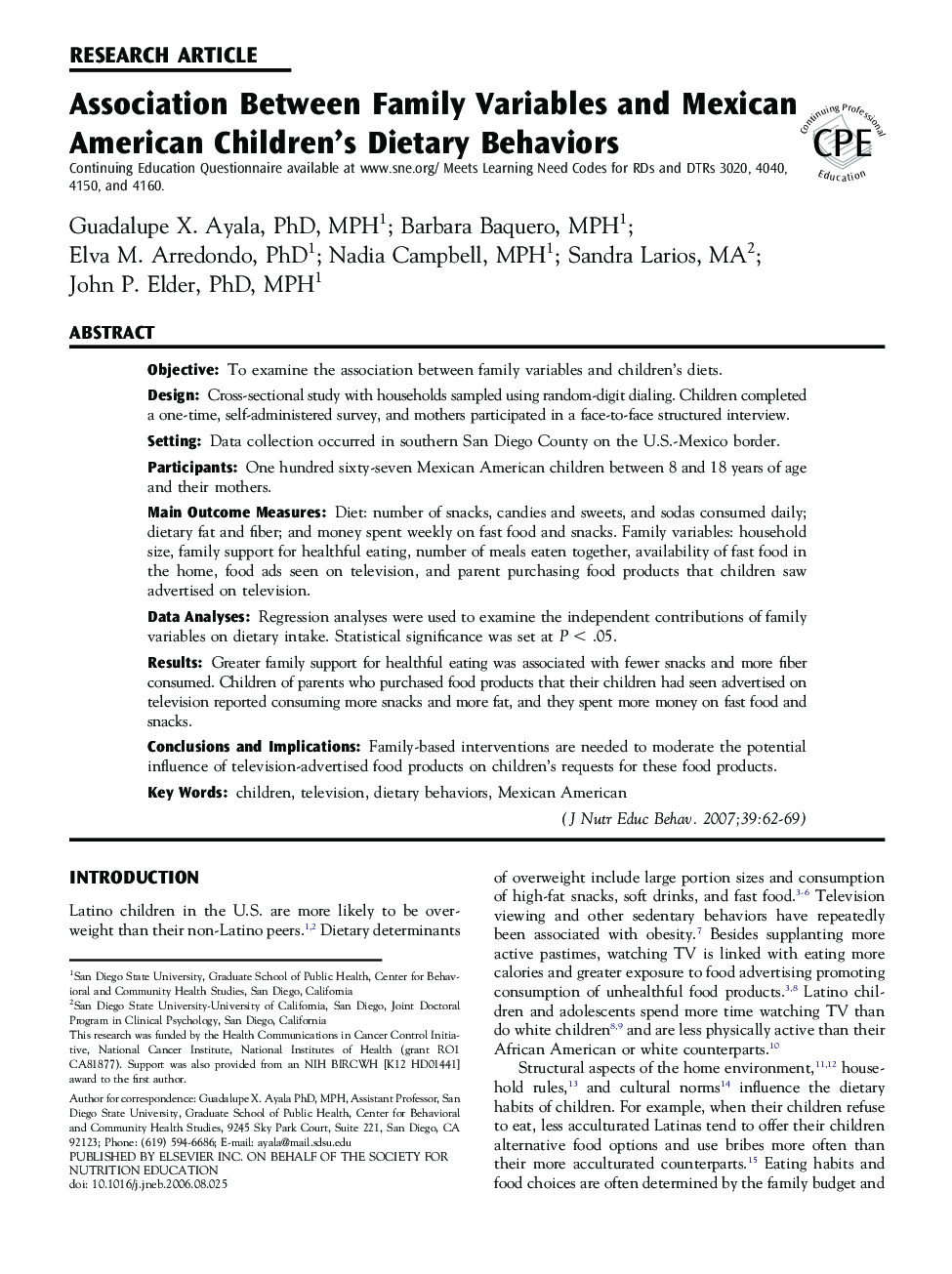| Article ID | Journal | Published Year | Pages | File Type |
|---|---|---|---|---|
| 363187 | Journal of Nutrition Education and Behavior | 2007 | 8 Pages |
ObjectiveTo examine the association between family variables and children’s diets.DesignCross-sectional study with households sampled using random-digit dialing. Children completed a one-time, self-administered survey, and mothers participated in a face-to-face structured interview.SettingData collection occurred in southern San Diego County on the U.S.-Mexico border.ParticipantsOne hundred sixty-seven Mexican American children between 8 and 18 years of age and their mothers.Main Outcome MeasuresDiet: number of snacks, candies and sweets, and sodas consumed daily; dietary fat and fiber; and money spent weekly on fast food and snacks. Family variables: household size, family support for healthful eating, number of meals eaten together, availability of fast food in the home, food ads seen on television, and parent purchasing food products that children saw advertised on television.Data AnalysesRegression analyses were used to examine the independent contributions of family variables on dietary intake. Statistical significance was set at P < .05.ResultsGreater family support for healthful eating was associated with fewer snacks and more fiber consumed. Children of parents who purchased food products that their children had seen advertised on television reported consuming more snacks and more fat, and they spent more money on fast food and snacks.Conclusions and ImplicationsFamily-based interventions are needed to moderate the potential influence of television-advertised food products on children’s requests for these food products.
